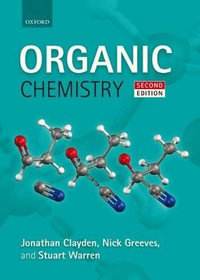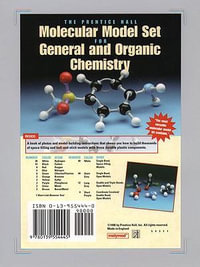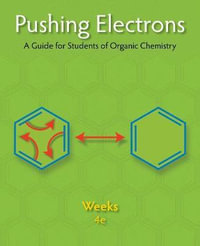| Artificial Intelligence - Making Use of Reasoning | p. 1 |
| Synthesis Planning by Computer | p. 6 |
| Other Programs to Support Chemical Synthesis Planning | p. 16 |
| Programs that are Similar to LHASA in their Approach | p. 16 |
| SECS and PASCOP | p. 16 |
| SYNLMA | p. 17 |
| SYNCHEM and SYNCHEM2 | p. 18 |
| SYNGEN | p. 19 |
| SYNSUP-MB and CAOSP | p. 21 |
| RESYN | p. 22 |
| SOS, MARSEIL, CONAN HOLOWin and GRAAL | p. 23 |
| AIPHOS and SOPHIA | p. 24 |
| Chiron | p. 24 |
| CICLOPS, EROS and WODCA - a Different Approach | p. 25 |
| PIRExS | p. 27 |
| COSYMA | p. 28 |
| CAMEO - Predicting Reactions | p. 28 |
| What Happened to Synthesis Planning by Computer? | p. 29 |
| International Repercussions of the Harvard LHASA Project | p. 35 |
| Structure Representation | p. 41 |
| Wiswesser Line-Formula Notation | p. 41 |
| SMILES, SMARTS and SMIRKS | p. 43 |
| CHMTRN and PATRAN | p. 45 |
| ALCHEM | p. 49 |
| Molfiles, SDfiles and RDfiles | p. 50 |
| Mol2 files | p. 51 |
| The Standard Molecular Data Format and Molecular Information File | p. 51 |
| Chemical Markup Language | p. 52 |
| Using Pictures | p. 52 |
| Structure, Sub-Structure and Super-Structure Searching | p. 55 |
| Exact Structure Searching | p. 55 |
| Canonical SMILES Codes | p. 56 |
| Morgan Names and SEMA Names | p. 59 |
| MOLGEN-CID | p. 63 |
| The Method Described by Henrickson and Toczko | p. 64 |
| InChI Code | p. 65 |
| Atom by Atom Matching | p. 67 |
| Substructure Searching | p. 68 |
| Set Reduction | p. 70 |
| Superstructure and Markush Structure Searching | p. 74 |
| Reaction Searching | p. 75 |
| Protons that Come and Go | p. 78 |
| Dealing with Tautomerism | p. 78 |
| Implicit and Explicit Hydrogen Atoms | p. 81 |
| Aromaticity and Stereochemistry | p. 85 |
| Aromaticity | p. 85 |
| Stereochemistry | p. 88 |
| Tetrahedral Centres | p. 89 |
| Double Bonds | p. 91 |
| Other Kinds of Asymmetry | p. 93 |
| Derek - Predicting Toxicity | p. 94 |
| How DEREK Came About | p. 94 |
| The Alert-based Approach to Toxicity Prediction in DEREK | p. 97 |
| Other Alert-Based Toxicity Prediction Systems | p. 103 |
| TOX-MATCH and PHARM-MATCH | p. 103 |
| Oncologic | p. 105 |
| HazardExpert | p. 107 |
| BfR/BgVV System | p. 108 |
| ToxTree and Toxmatch | p. 108 |
| Environmental Toxicity Prediction | p. 108 |
| Rule Discovery | p. 110 |
| QSAR | p. 110 |
| TopKat | p. 111 |
| Multicase | p. 112 |
| Other Fragment-Based Systems | p. 113 |
| REX | p. 114 |
| Using Atom-Centred Fragments | p. 115 |
| Other Approaches | p. 116 |
| The 2D-3D Debate | p. 119 |
| Making Use of Reasoning: Derek for Windows | p. 124 |
| Moving on from Just Recognising Alerts in Structures | p. 124 |
| The Logic of Argumentation | p. 126 |
| Choosing Levels of Likelihood for a System Based on LA | p. 132 |
| Derek for Windows | p. 134 |
| The Derek for Windows Alert Editor | p. 138 |
| Predicting Metabolism | p. 142 |
| COMPACT, MetaSite and SPORCalc | p. 143 |
| XENO, MetabolExpert and META | p. 144 |
| Meteor | p. 146 |
| Relative Reasoning | p. 155 |
| Predicting Biodegradation | p. 165 |
| BESS | p. 166 |
| CATABOL | p. 167 |
| The UMBBD, PPS and Mepps | p. 167 |
| META | p. 172 |
| The Future for Prediction of Environmental Degradation | p. 174 |
| Other Applications and Potential Applications of Knowledge-Based Prediction in Chemistry | p. 176 |
| The Maillard Reaction | p. 176 |
| Recording Information about Useful Biological Activity | p. 177 |
| Proposing Structural Analogues for Drug Design | p. 178 |
| Predicting Product Degradation during Storage | p. 178 |
| Designing Production Synthesis Routes | p. 179 |
| New Approaches to Chemical Synthesis Planning | p. 180 |
| Predicting Ecotoxicity | p. 180 |
| Using Knowledge-Based Systems for Teaching | p. 182 |
| Evaluation and Validation of Knowledge-Based Systems | p. 183 |
| Combining Predictions | p. 191 |
| Existing Approaches to Combining Toxicity Predictions | p. 191 |
| The OECD (Q)SAR Toolbox | p. 194 |
| Combining Predictions about Modes of Action that are Largely Independent | p. 194 |
| Combining Metabolism Predictions - the NoMiracle Project | p. 196 |
| Combining Different Models and Predictions about Different Properties | p. 197 |
| A Subjective View of the Future | p. 201 |
| Subject Index | p. 204 |
| Table of Contents provided by Ingram. All Rights Reserved. |

























